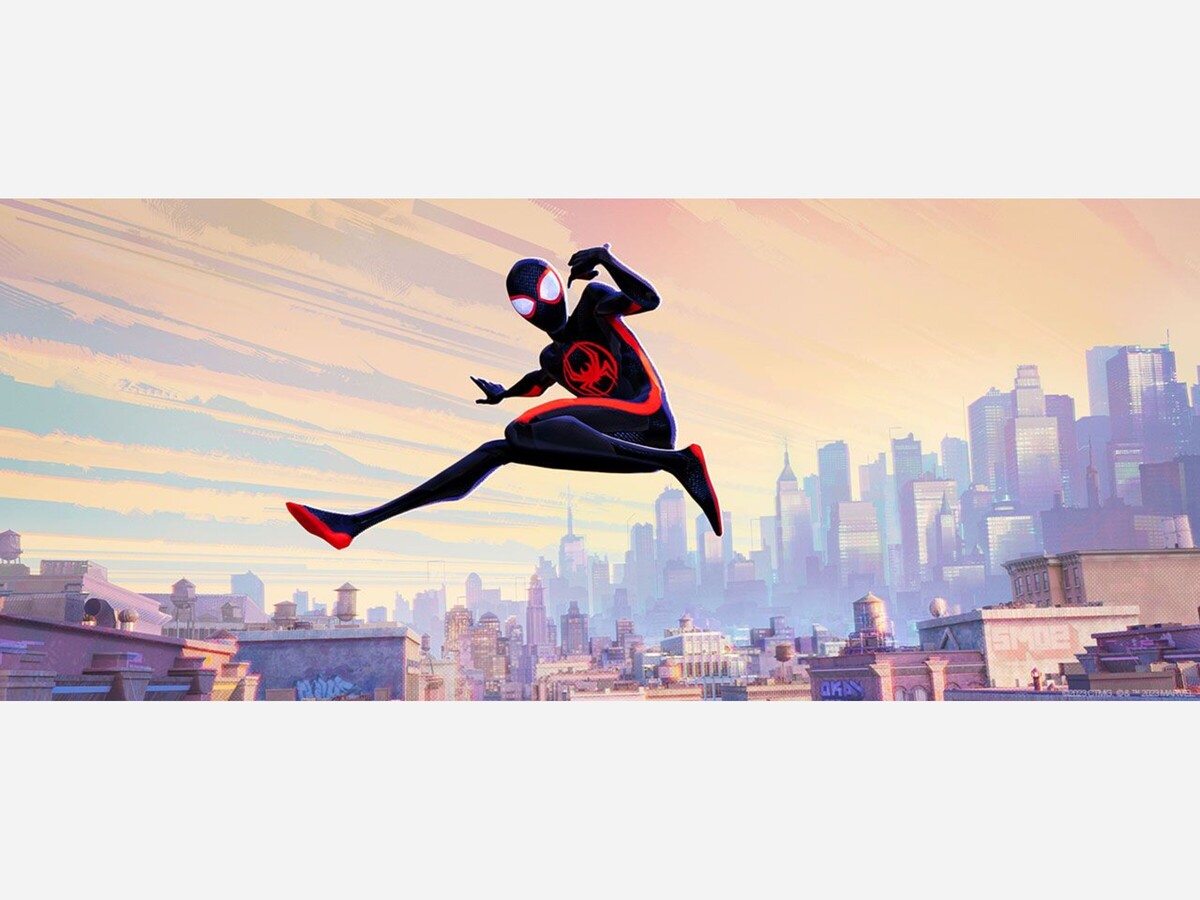Image


In 2018, Spider-Man: Into the Spider-Verse was released and almost immediately entered the conversation as both one of the best animated movies ever and one of the best comic book movies ever. It took the story of Miles Morales and adapted his origin story cinematically in a feature that had great comedic moments, a lot of heart, and a unique visual style that set itself apart from other animated movies. The movie would be a tough act to follow, and mileage will vary depending on how much people love the mythos of the character Spider-Man, however Spider-Man: Across the Spider-Verse is a worthy follow-up to the original.
Spider-Man: Across the Spider-Verse picks up one year after the first film and follows Miles Morales (Shameik Moore) as he tries to balance his life as Spider-Man and his personal life with his parents. When a supervillain known as The Spot (Jason Schwartzman) surfaces and declares himself Spider-Man’s nemesis, the Spider Society (including Hailee Steinfeld’s Spider-Woman, Issa Rae’s Spider-Woman, and Oscar Isaac’s Spider-Man 2099) intercedes to stop The Spot from destroying the multiverse.
The first film redefined what could be done with animation. It had a blended 2D/3D art style that had different characters look different depending on what universe they were from. The sequel cranks that up even higher because the movie showcases alternate worlds, all of which have unique art styles. Gwen Stacy’s universe looks like it was painted with watercolor that changes with the mood of the scene and is evocative of the original 2015 run of the comic (which was also designated Earth-65). The universe of Spider-Man India (voiced by Deadpool’s Karan Soni) has a more 2D drawn look to juxtapose itself with the more 3D look of Earth-1610 where Miles is from. The best look is hands down Spider-Punk (voice by Get Out’s Daniel Kaluuya) who looks like he stepped off a 1970s British punk rock album as if he is a paper craft.
The sequence in the headquarters for the Spider Society is a highlight of the film and is chock full of cameos from across the various media over the years. There is a Lego Spider-Man, the Spectacular Spider-Man from the animated television show, the Spider-Man from the Insomniac video games, Ben Reilly’s Scarlet Spider, and many more. Seeing them all interact in this setting is entertaining and leads to a number of great moments as the new rules for the canon are established.
If there is a complaint with this movie it is that it is very much part one of a two-part movie. There is no post-credit scene, just the introduction of the title card for the sequel. Miles’ story never feels completely resolved because it is meant to carry over to the next one. There is another thematic issue, however, that would be a spoiler and it will probably be obvious once the viewer enters the second act of the film. Finally, the movie lacks a major moment that can match the first’s leap of faith sequence, however, whatever that moment would be for this arc is probably going to be reserved for next March’s sequel.
If one is going to go to the movies this weekend, they should definitely go and watch Spider-Man: Across the Spider-Verse. It is two and a half hours long and never feels as long as it is. The film is entertaining from beginning to end and has some truly beautiful sequences with an excellent sound mix that makes it well worth the time to watch. While this movie may be just a shade beneath the first, should the third entry stick the landing, the trilogy will be far and away the best comic book movie trilogy by a country mile.
Final Rating: 10/10